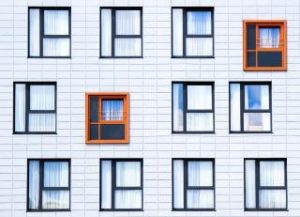The Best Windows for Energy Efficiency
Windows provide illumination and a scenic view of the outdoors, but they can also be a weak link in your household energy strategy. After all the holes in a typical home are sealed and insulation is upgraded to current standards, the glass in your windows may still be a two-way portal for heat gain and loss. In summer, windows admit solar energy during daylight hours, causing your A/C to run longer cycles. On winter nights, glass readily allows indoor heat to radiate back outdoors, raising heating costs.
Energy-efficient windows reduce the transmission of heat energy. Typically, they incorporate “low-E” (low emissivity) glass — a type coated to reject wavelengths of ultraviolet and infrared heat while still admitting wavelengths of light. The smaller the emissivity factor, the more efficient the glass. Uncoated window glass has an emissivity rating of 0.84 while energy-efficient low-E glass may be as low as 0.02. Double-pane glass is a “sandwich” that incorporates a thin void between the panes filled with an inert gas such as argon that adds extra insulating value. This represents generally the lowest emissivity rating of all options.
Standard criteria to help you compare the performance of energy efficient windows include:
- U-Value: The figure that rates the amount of heat loss a window allows. Efficient windows typically have a U-value of 0.28 to 0.37. The lower the rating, the more efficient the glass.
- Solar Heat Gain Coefficient (SHGC): This rating expresses the amount of solar radiation a window admits. The lower the window’s SHGC, the less the amount of solar radiation transmitted. Efficient SHGC ratings usually range from 0.27 to 0.66.
- Visible Light Transmittance (VLT): The amount of illuminating light allowed to pass into your home is rated as a percentage: the higher the rating, the more well-lit your rooms. Efficient glass has a VLT ranging from 54 percent to 74 percent.
At Sobieski Services, Inc., our goal is to help our customers in Delaware, Pennsylvania, Maryland and New Jersey learn more about energy and home comfort issues — especially HVAC and plumbing issues — so that they can save money and live in healthier, more comfortable homes.
Photo Credit: Unsplash/Pexels








